
Scared Money Don't Make Money
Ugly shoes and skinny jeans had the same cycle as retro shoes and expensive denim. Large waves start out as small ripples with a lot of pushback. Thanks to the social media that pushback is loud and constant, but “that shoe is trash” on IG in 2019 is simply more visible than “that shoe is wack” on NikeTalk in 2004. The sentiment is the same.
Trends Start as Anti-trend
While I try to avoid generational conversations I definitely buy into how age and community affect buying choices. I always laugh when I hear 30- and 40-somethings complain about Nike and Adidas not being “the same”. These brands must constantly evolve because their 17-year old target audience buys 10 pair of sneakers per year versus one pair on closeout. These kids wear their kicks and hoodies to games, clubs, exhibits, festivals, parties and work. That’s energy. That’s buzz. That’s business. As soon as you started prioritizing your mortgage options over your shoe box storage needs you became invisible to those brands.
And that 17-year old may aspire to be like you in the future, but for now that’s an eternity away. So they want what you have without sacrificing what they have — style.
I know it hurts to hear, but our complaints about skinny jeans and mixing brands is what makes us old to them. Their trashed AF1’s are cool and our color coded fits are washed.
Until one day it’s cool again and my kids stop judging me for that last sentence.
That roller coaster always has a way of starting over. Just like bulky shoes and tight sweats returned to the throne, simple shoes and baggy jeans are on the comeback.
The last shift was difficult for my generation. Square toes and knee length jerseys watched the 2003 NBA Draft reach pique level of hood rich. Fabric manufacturers were getting double the work. In 2013 those looks became the butt of fashion thinkpieces across the web. Yet by 2023 those blissful teardowns will be terribly out of touch.
But the youth of 2010 started rocking tight jeans like our uncles in the ‘70’s and ‘80’s because the cool kids were introduced to something different. Here we go again.
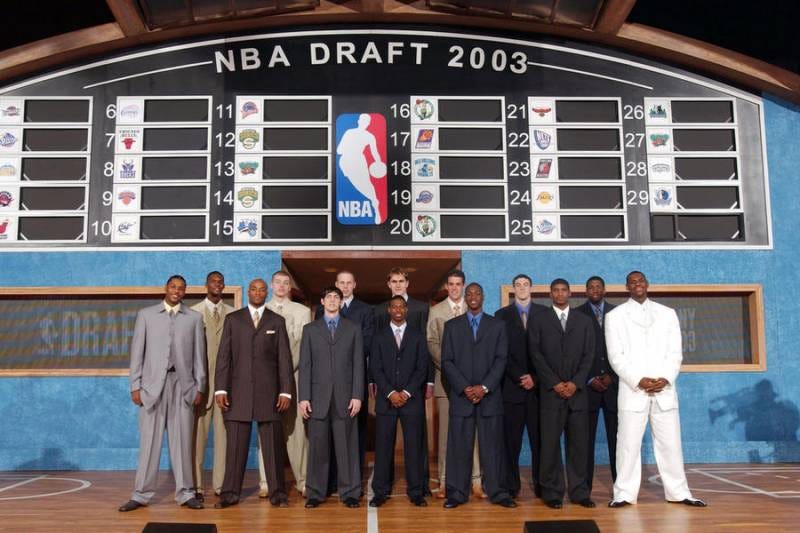
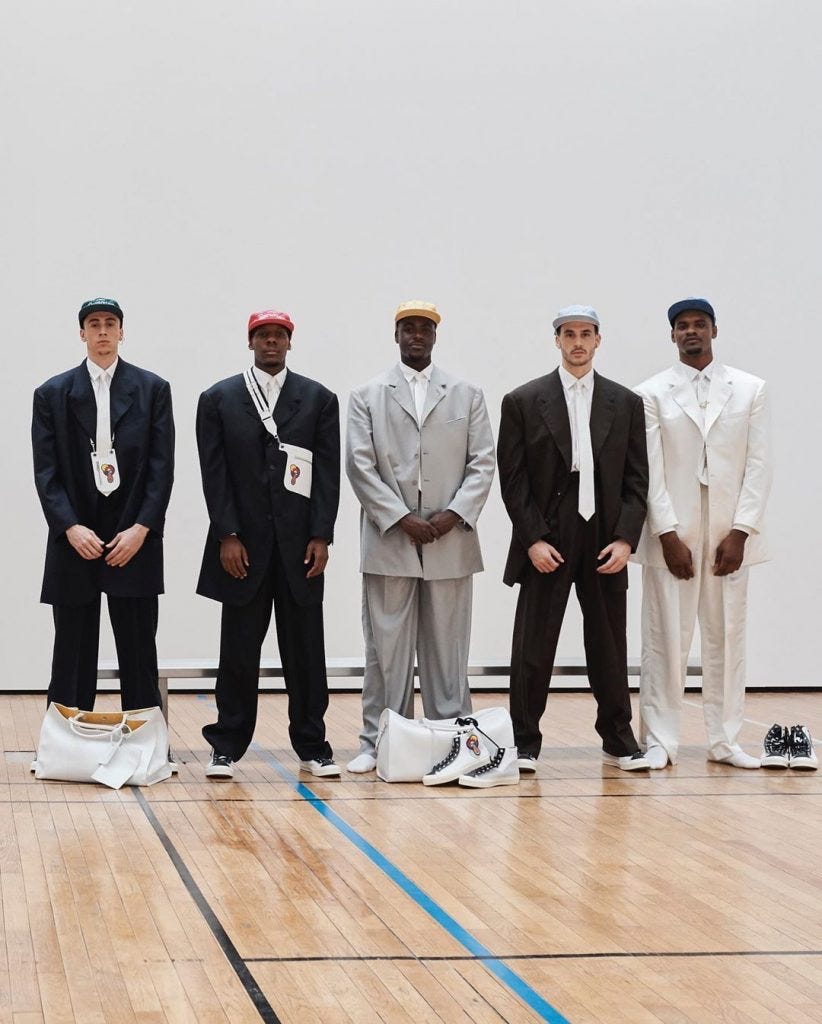
Math is Important
Sandy Boedecker taught me about the psyche and environment of the seventeen year old. Before the internet and social media their fashion reflection started at twelve. Sure they saw fashion everyday and maybe participated on Easter Sunday, but what you wear becomes a bigger deal in middle school.
Pre-internet teens were only exposed to the here and now with respect to fashion. We made fun of what old folks wore and thought what was on TV and in magazines was fresh. Two dimensions of accessible fashion viewpoints. If you wanted to see more you had to put real effort in to seeing the history or function of clothing and fashion. You’d have to find out that there were old magazines, then you had to locate those magazines and then you’d have go page by page to learn what was happening — most likely out of context.
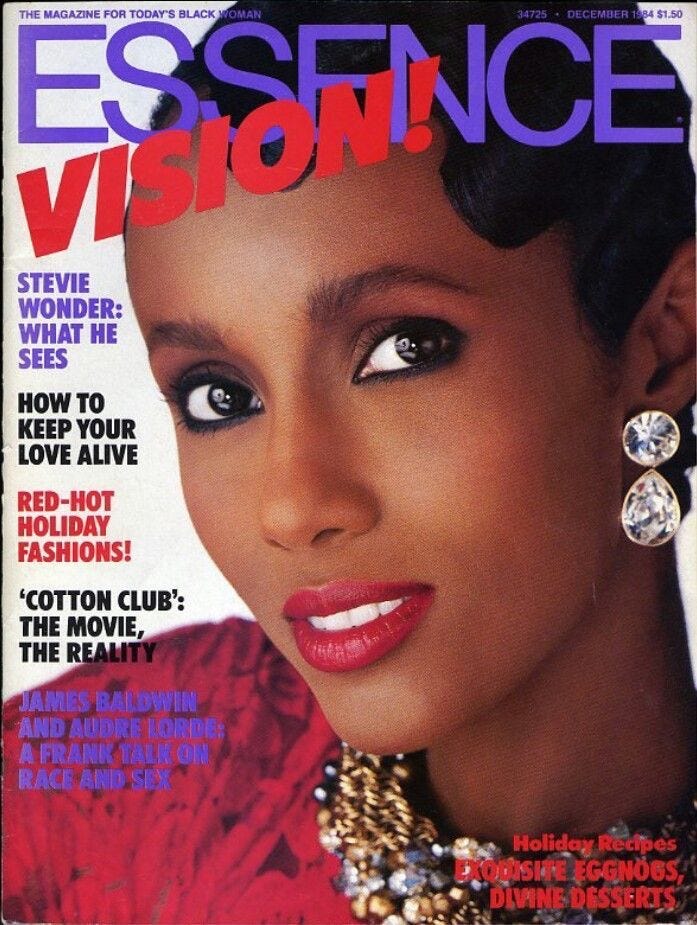
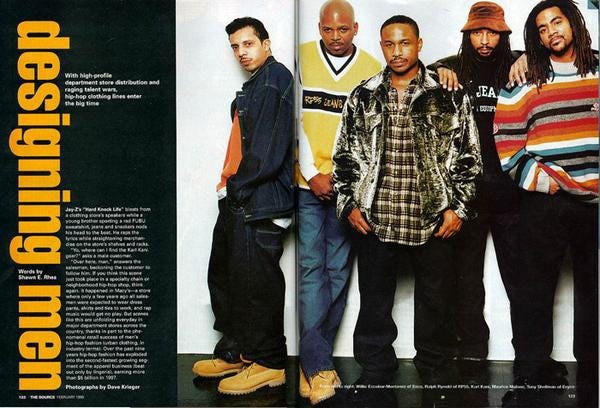
Today’s teenagers can find a Harvard professor’s collaborative article with the editor of Vogue on the history of denim in a Google search. I made that last sentence up and then did the Google so…
Without question teens today are more informed, but they have 100x more distractions so it’s a wash. In 1988 I wore what I saw on BET and my kids have IG. Same same.
So 17 is still 17.
And once there are too many old folks wearing a certain style, it’s no longer fresh.
Big Waves
Trends have trends with respect to origin. While the internet teaches us about the complex birth of slang and fashion and memes and culture, you can see where patterns begin to form. Not every origin follows a specific pattern, but companies spend big money to locate and follow the sources in order to monetize the path. Arbiters of cool, influencers, cool kids, whatever.
For fashion these paths are heavily cultivated and regurgitated on runways and in magazines, but I guarantee that every fashion designer, editor, stylist and model were once 17. Even if they were raised in the hallways of Celine or Ralph or Nike they had to spend time with their own generation enough to bring those sensitivities and emotions to their personal style and creative output.
Eventually the collective energy of those 17 year olds cause a ripple in the wallet of big business. Urban teens start wearing denim in the 1950’s. Black teens start wearing Polo shirts in the 1980’s. White girls start wearing dirty Air Force 1s in the last two years. Some moments are short lived — Crocs in 2019. Some moments last decades — skinny jeans.
The best way to tell a wave is coming is to find the old people that grimace at a ripple. The ‘I would never’ rules of fashion feed 17 year olds to no end.
- Nike shoes and Adidas socks
- Mismatch colors
- Tight shorts
- Wild hair
- Dirty sneakers, creased sneakers
- Fanny packs, Crocs, offbrands
Those were rules from my generation that we thought were fresh. They separated us from those old folks. Then we became the old folks and complain about the ‘kids these days’ not having any rules. For those of you who don’t understand the explicit implications of how these rules affect lives, please read the best fashion article I’ve read in years. So when we ‘adults’ begin to stress about the ‘children’ not having rules, we understandably become concerned.
On the contrary, they have new rules. Some of those rules just happen to be the opposite of the old rules. And then there are new rules like it’s 100% okay to not follow the rules.
Once you see old folks — 22 an up — scrunch their noses at something, be ready to watch the 13 year olds line up.

The Reward
Folks with short memories that use the term sneakerhead talk about their appreciation for a colorway of the Dunk or the simplicity of the Stan Smith or the expression of the Triple S. But the industry insiders remember the collapse of the business in the early 2000’s. We love the passion for kicks that sneaker aficionados have, but the ‘pig-chicken-breakfast’ story separates veterans and collectors. Tim Brown put his chips on a wool shoe. Versace put their chips on a designer with an unusual name. A rent check is nice, but your livelihood is real commitment.
Few people outside of Nike knew that Cole Haan was owned by the athletic brand. The use of cushioning technology like Air and Lunar — spearheaded by Gordon Thompson — didn’t go out of its way to document org charts and company personnel. Cole Haan was simply making shoes with comfortable technology where consumers were concerned.
But Cole Haan was a subsidiary of Nike that Phil Knight purchased in 1988.
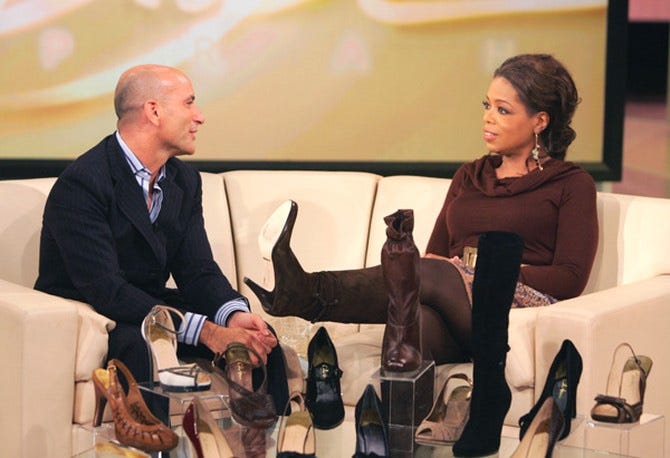
In 1985 I was wearing blue and yellow Michigan Wolverine Dunks. By 1988 I was wearing Jordan 3’s with an Air bubble because the acapella intro to BDP’s My Philosophy was everything. Basketball shoes were supposed to be white or black and they weren’t supposed to have Air. My older brother would constantly make fun of me. Those were the rules.
And in 1988 no one wore sneakers for anything but sports like basketball or running. So Phil Knight bought Cole Haan because the prevailing logic was that, in order to make REAL money in footwear, you had to make REAL shoes.
Not sneakers.
Fortunately for him, I was almost 17.
Good things.

